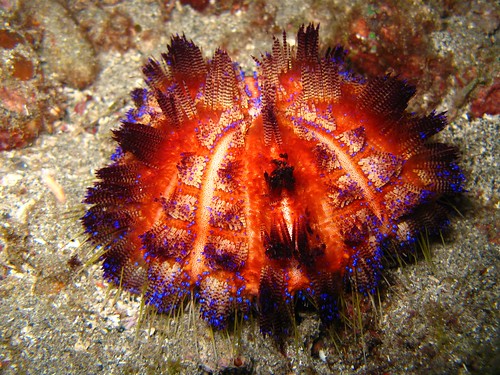 |
| Image by Aboireoujtulchien |
Last week I reviewed deep-sea echinothurioid urchins aka the "tam o shanter urchin" aka the "pancake" urchin, etc., etc. I spoke
of these more generally in an earlier post. But for some reason I've not had a chance to really showcase their shallow water relatives!
 |
| From SERPENT |
Shallow water echinothurioid urchins are "proper" fire urchins. As opposed to these other "fire colored" spiny urchins, such as
Astropyga which are diadematoid urchins.
A completely different group!!
"Spiny" urchins are distinguished by the presence of an Anal Cone. See that white bulb on top? THAT is where the poop comes out! You don't see that in "proper" fire urchins as we'll be seeing.. Note also that the spines are much longer.
(image by Ben Naden)
I've discussed Astropyga on the blog before (here)...
These urchins all belong to the
genus Asthenosoma which includes six species spread throughout the Indo-Pacific region. Here's a neat video that gives you an idea of what they look like..
Yes, the colors are a huge shift in appearance, but similar to their deep-sea cousins,
Asthenosoma also has the distinctive "walking" spines...
On this image of
Asthenosoma varium the walking spines form a fringe around the lower oral side composed of distinctly yellow spines. My understanding is that most of these prefer soft, muddy bottoms.
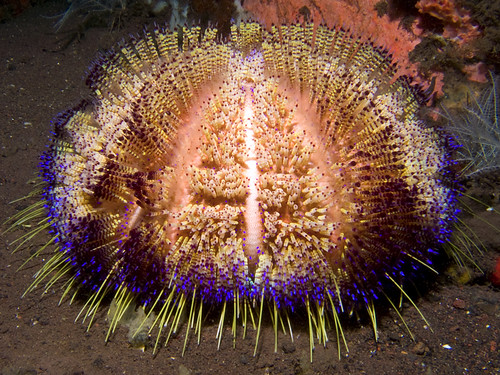 |
| Image by Ben Naden |
Some video!
Compare to the walking spines on this deep-sea echinothurioid.
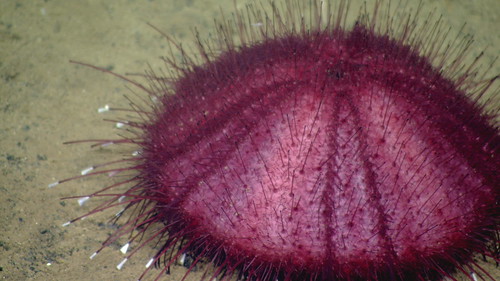 |
| Image by NEPTUNE Canada |
From there we start to see more differences as the spines seem to be bunched up in bundles...
But they remain venomous...
 |
| Image by JianXu |
Some workers have hypothesized that the poisonous spines in deep-water echinothuroids
function as hypodermic needles (here by Roland Emson & Craig Young)
And if its not clear by now, YES. They're pretty damn venomous. My understanding is that its very painful.. but typically not lethal.
and they certainly do seem like they do, don't they??
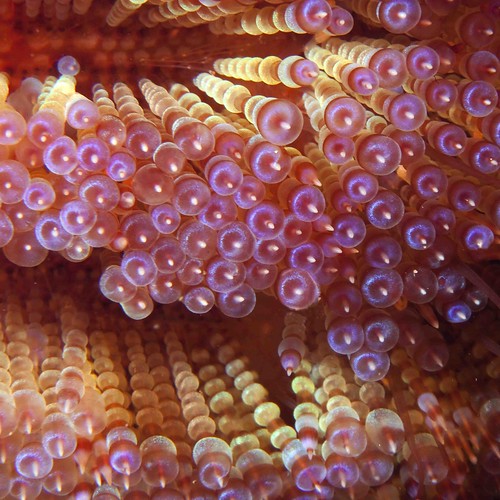 |
| Image by Bruce Magun |
 |
| Image by Daniel Stassen |
Close ups! showing some of the brillaint colors, spine patterns and etc.. I suspect most of these are
Asthenosoma varium
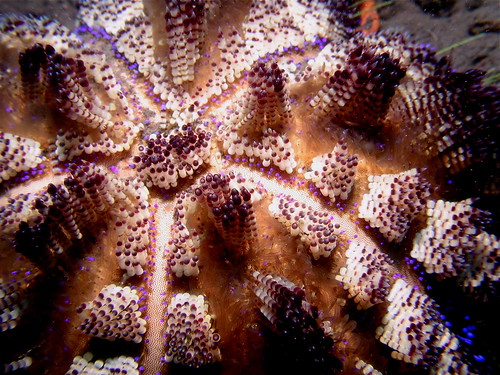 |
| Image by MerMate |
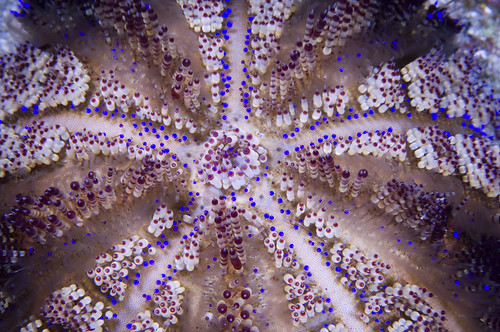 |
| Image by Daphna130 |
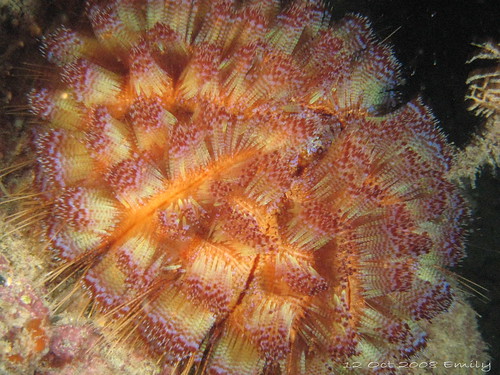 |
| Image by lupopeye |
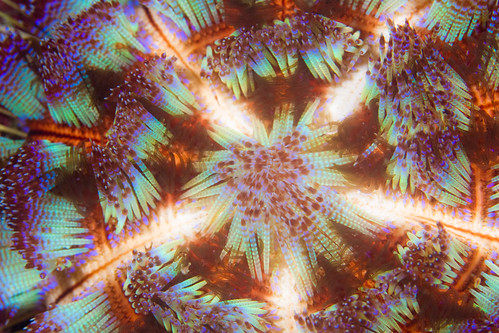 |
| Image by maractwin |
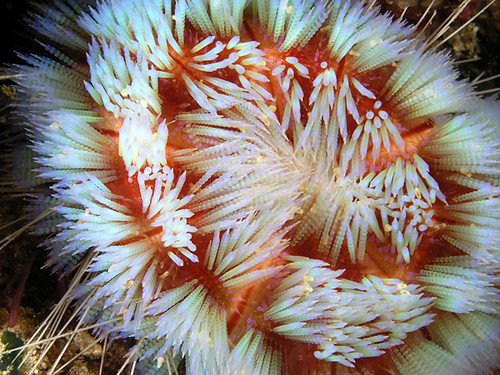 |
| Image by Nick Hobgood |
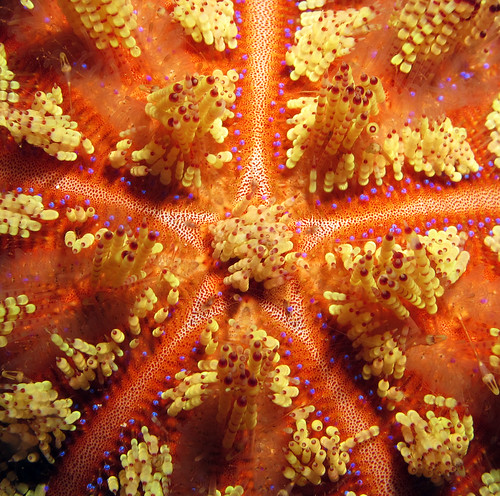 |
| Image by B. Maither |
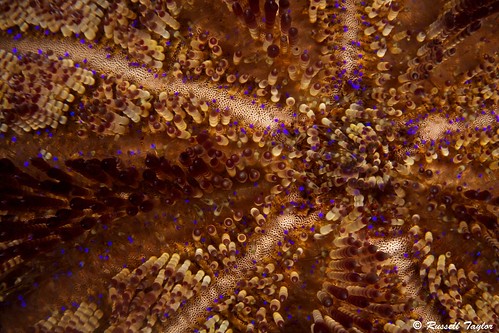 |
| Image by Russell Taylor |
Here's some differing species from around the Indo-Pacific
From the Red Sea,
Asthenosoma marisrubi with a more mellow look...
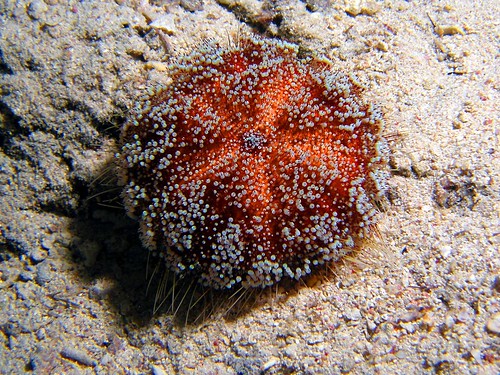 |
| Image by Key of Life |
Here are the spines..still basically the same but different color and slightly different shape..
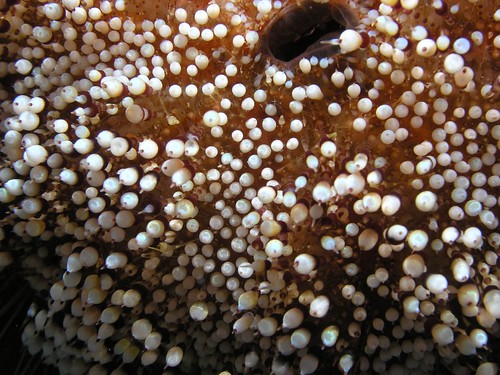 |
| Image by Le Congre |
Asthenosoma spp. showing many different colors...
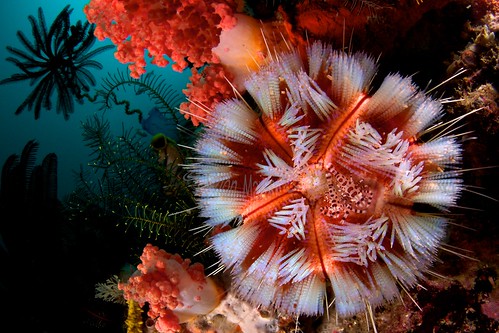 |
| Image by S1mon Mar5h |
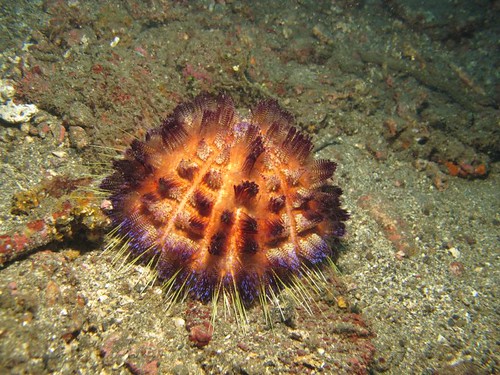 |
| Image by Clark Chang |
 |
| Image by Jesse Claggett |
 |
| Image by Richard Barnett |
What's even MORE interesting? These urchins have tiny critters which live as commensals(?) among the highly poisonous spines! (this neat vid also shows a LOT of close up details)
Urchin Riders from
liquidguru on
Vimeo.
Some of the little buggers actually "hollow" out a space, clearing out spines where they can live! You can see the bare patch on this one...
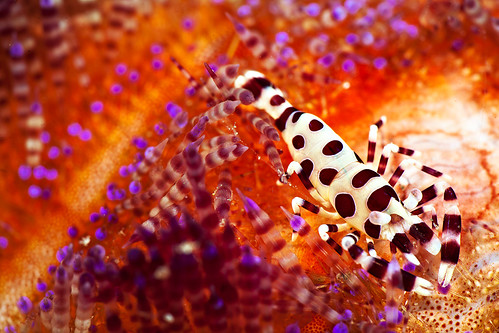
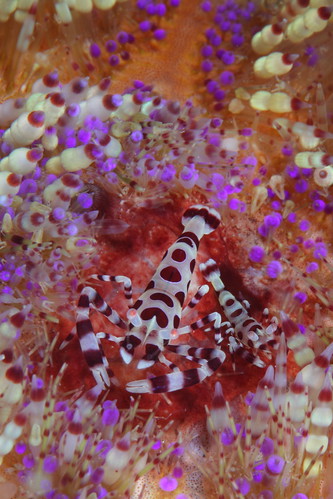 |
| Image by Klaus Stiefel |
In addition to all the various crustaceans, Amazingly. Here is a benthic ctenophore (
which I've written about here) ON A FIRE URCHIN!! (the white blobby bits are the feeding tentacles) Mind. blown!! and incidentally.. a likely first occurrence recorded....
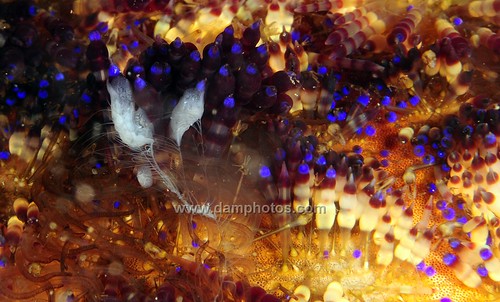 |
| Image by Mark Atwell |






















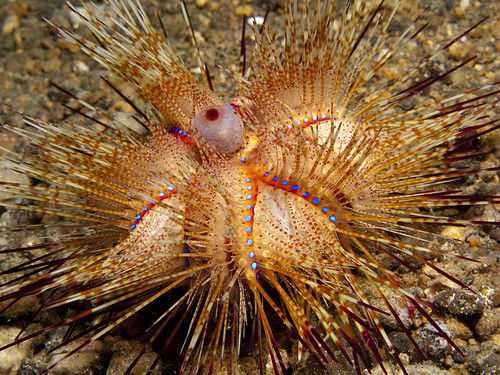

3 comments:
Benthic ctenophores on fire urchins - w00t! I always learn from your blog!
That was quite a neat one to find! I think that's a new record...
Cool!Very beautiful! Thanks for your sharing!
Post a Comment